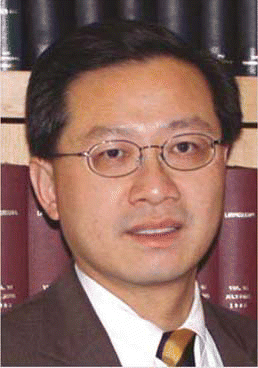It is agreed that sudden single-sided deafness is an emergency that is typically treated with corticosteroids. The question is, what route of treatment is best? Or, more specifically, is the intratympanic route as effective and fraught with fewer adverse effects than the time-honored systemic route?
Explore This Issue
April 2006Investigators in an ongoing Phase III clinical trial, sponsored by the National Institutes of Health, hope to emerge with a definitive answer to this question. In separate phone interviews, one of the participating investigators and two other experts in sudden sensorineural hearing loss (SSNHL) discussed the importance and timeliness of the trial.
This is a well-known condition that all otolaryngologists learn about in residency, said Steven D. Rauch, MD, Associate Professor of Otology and Laryngology at Harvard Medical School in Boston, Mass. It’s one of the few otologic emergencies. The best epidemiologic data suggest it strikes one person per 5,000 per year. In metropolitan Boston, for example, this would mean that 300 or 400 people per year develop idiopathic SSNHL. It’s a fairly common problem.
I’m really excited that the trial has gone forward. We face this difficult problem all the time. – -Steven W. Cheung, MD
Untreated SSNHL has an ominous prognosis: in untreated patients, spontaneous recovery only occurs in 25% of cases; early diagnosis and treatment with corticosteroids improves the recovery rate to 50%.
For several reasons, idiopathic SSNHL is difficult to treat:
- The symptoms overlap with reversible nerve deafness due to such cases as drug-induced ototoxicity and acoustic trauma.
- Patients do not perceive the condition as urgent. The dilemma that we face is getting the patients in time to reverse the hearing loss, Dr. Rauch said. The predominant symptom is a stuffy ear. Ear wax, water, fluid, and infections can all cause stuffiness. The patient doesn’t connect it to nerve damage, and the hearing loss goes untreated or treated with pseudoepinephrine over the phone by a primary care physician. Often patients aren’t seen by an otolaryngologist for another month, when it’s far too late to treat the hearing loss. That’s frustrating to me. One of the things we hope to accomplish with our study would be to raise the awareness of this condition among primary care doctors.
- Even if patients are seen promptly, the chance of recovery with oral steroids is only 50%. When only 50% of patients respond, it may be that, with oral treatment, not enough gets to the ear, Dr. Rauch said.
Simple Test Identifies Emergencies
A physician or nurse can differentiate SSNHL from more benign causes of single-sided deafness by a simple test that can be given over the phone, Dr. Rauch said. If a patient calls and complains of blockage in one ear, ask the patient to hum, he said. Ask the patient where he hears his own voice when he hums. If he hears it in the blocked ear, there’s nothing to worry about. It’s a wax build-up or other benign cause. If the patient hears the humming in the good ear, it’s nerve loss and it’s an emergency. If nurses know that, we can find and treat SSNHL patients much more quickly. Sound goes toward a conductive hearing loss and away from a sensory hearing loss. It’s like a tuning fork test.
The Appeal of Intratympanic Injection
The investigators hope that the study will shine the light of science on intratympanic steroid injections, which are growing in popularity, Dr. Rauch said. The logic of treating by injecting directly into the ear has some appeal, but it is simplistic to think that if some is good, more is better, he said. Prior research has shown intratympanic steroid injections get approximately the same results as oral treatment.

Leave a Reply